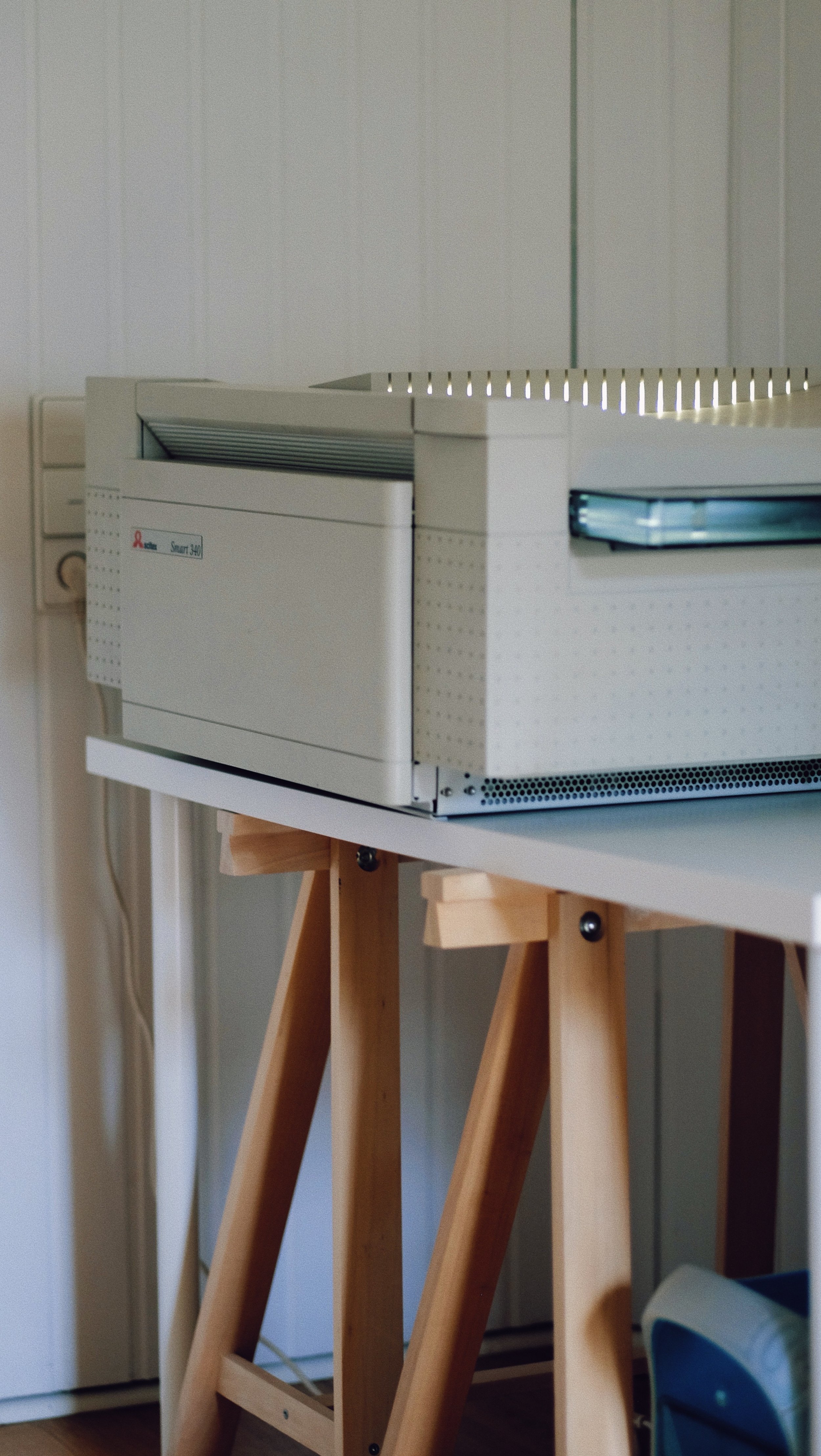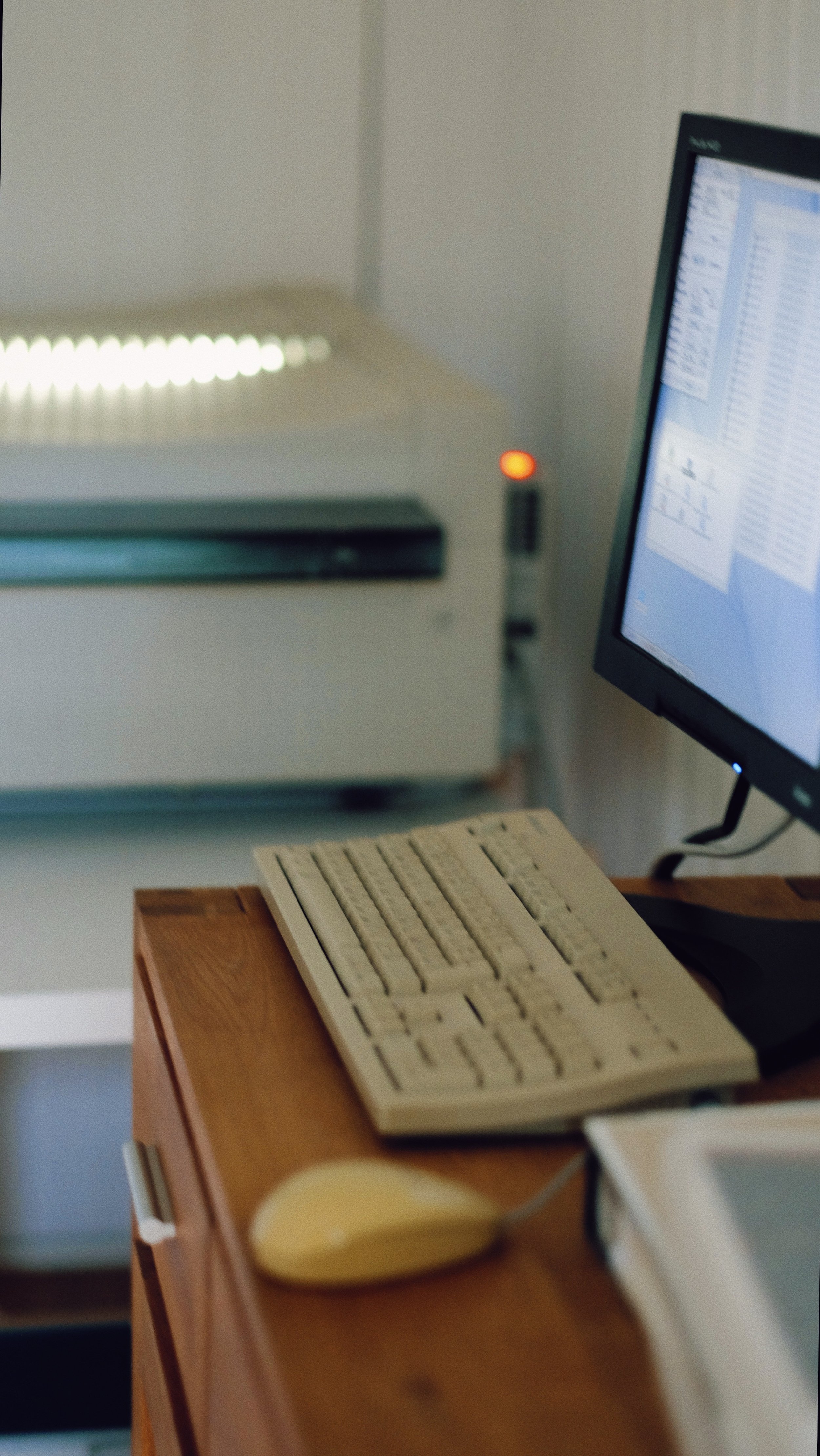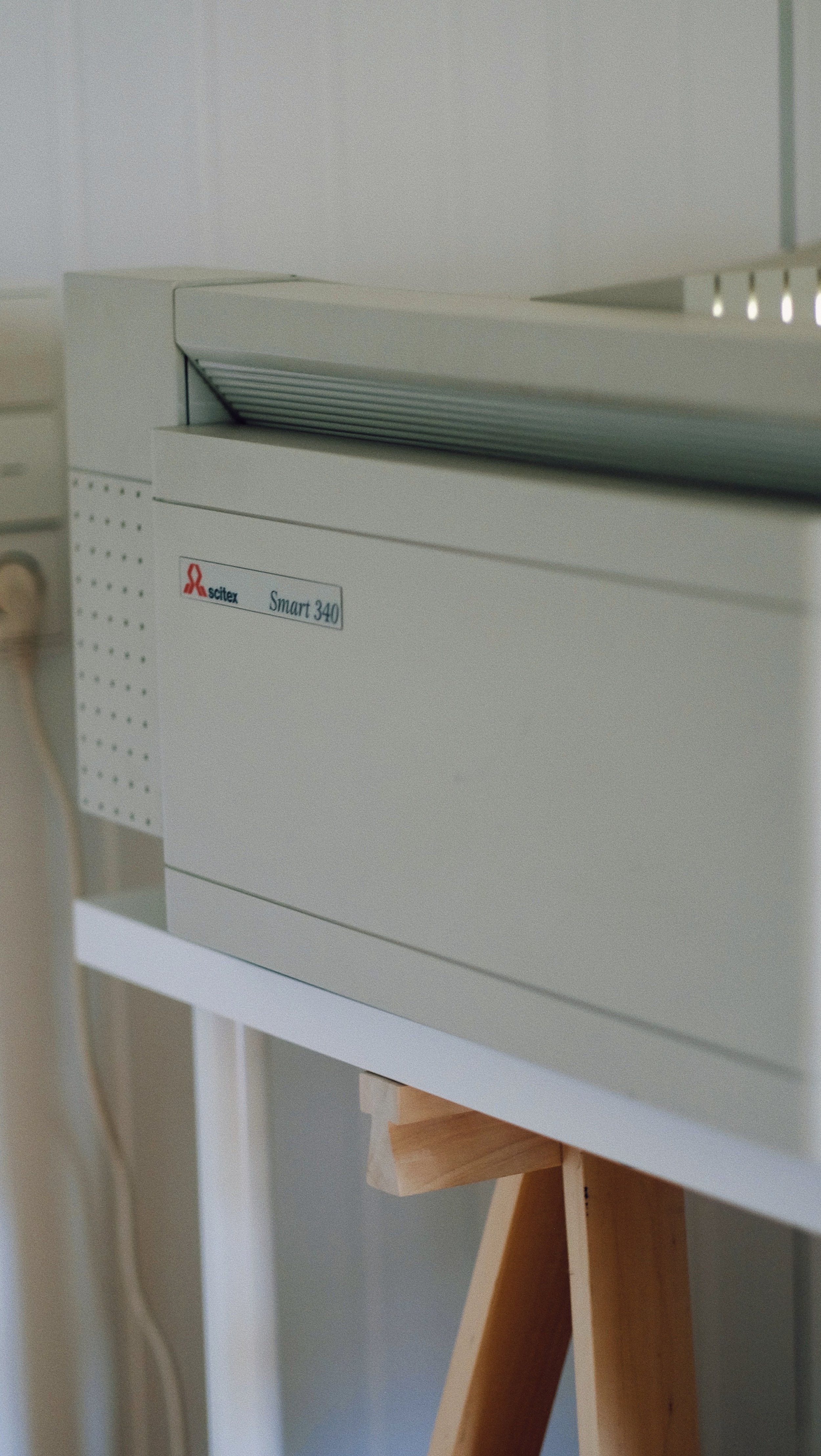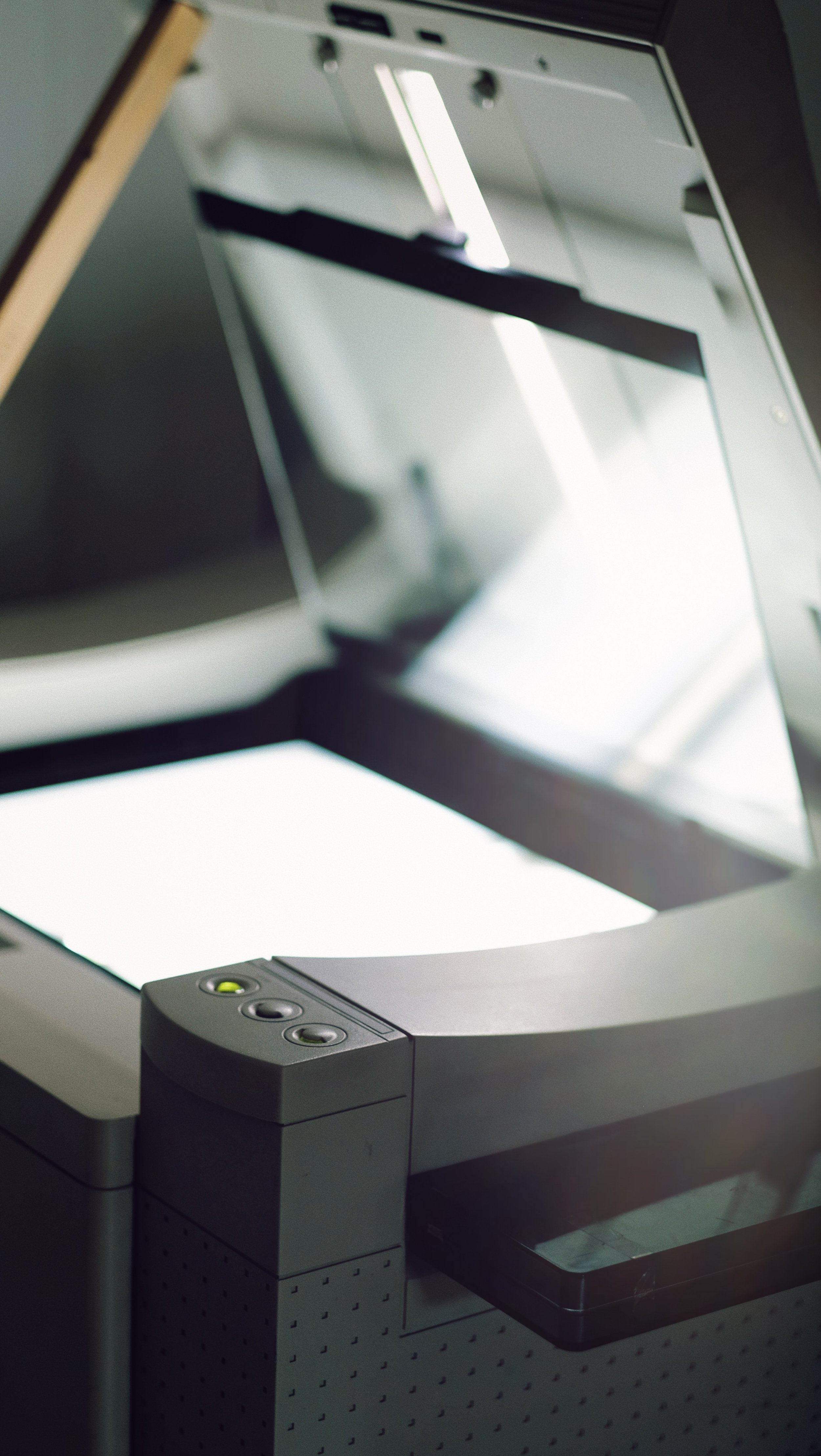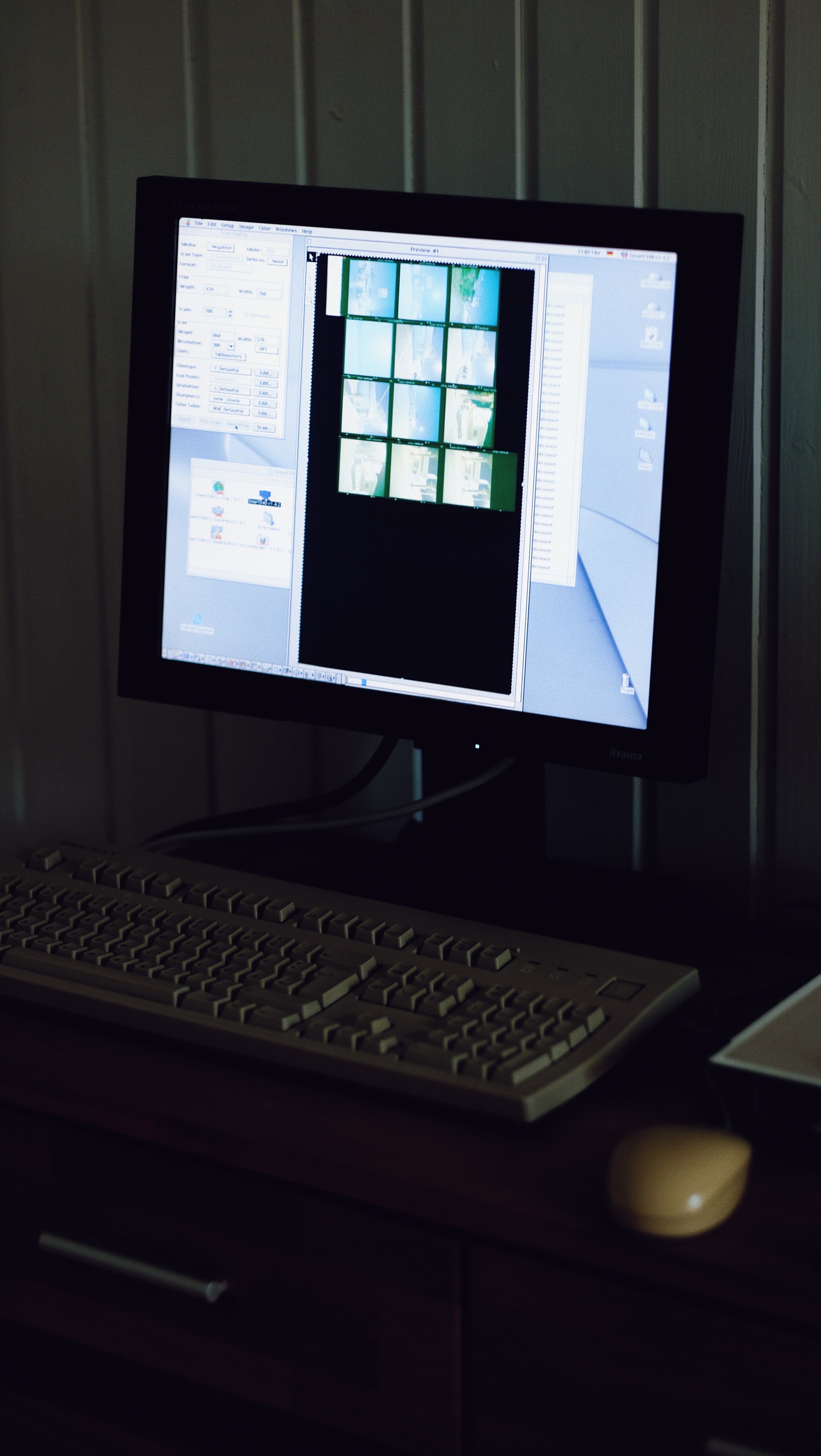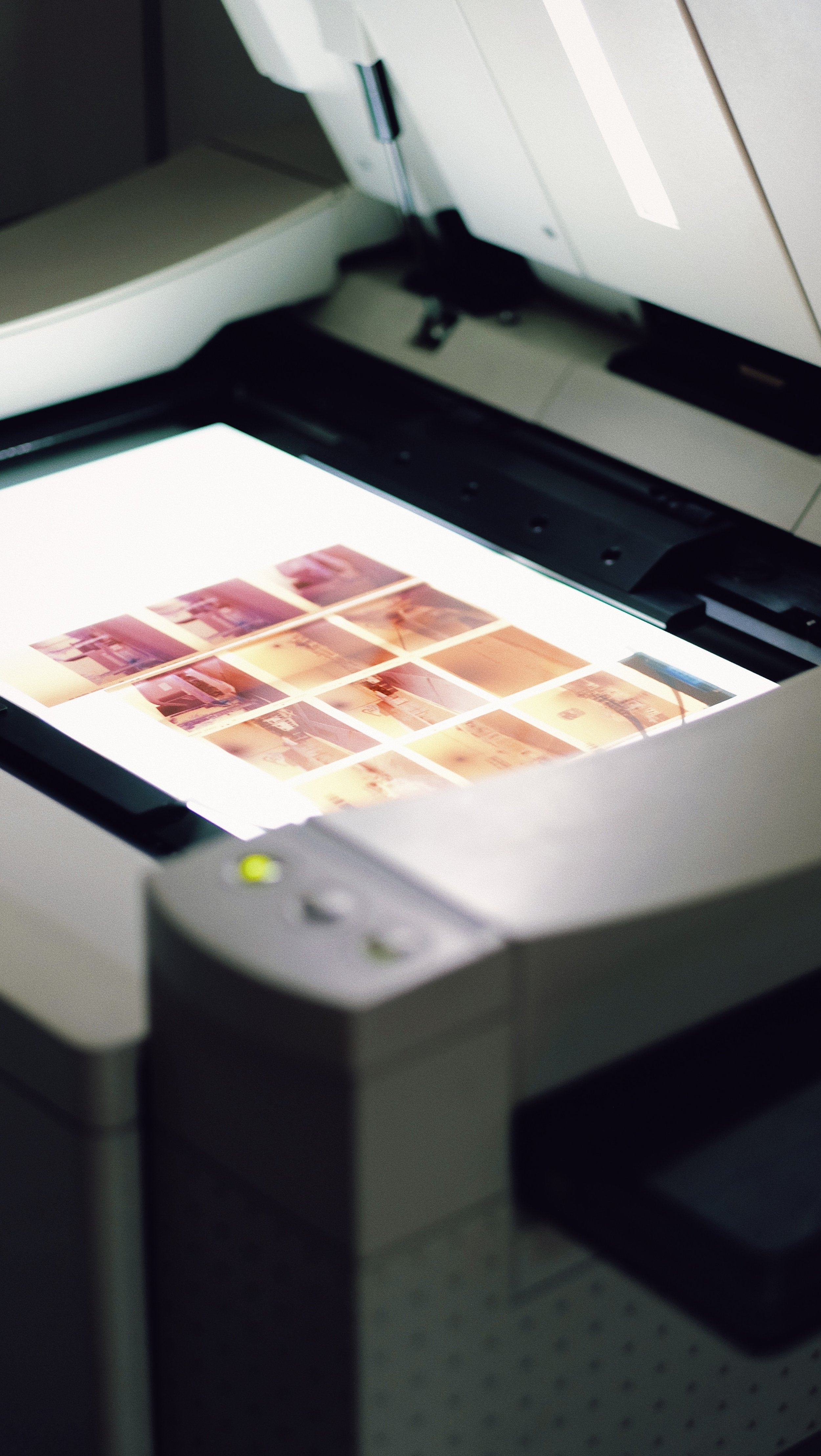Working with a “monster”
It’s massive, it’s huge and it’s heavy. Super heavy! Most definitely an impressive machine, a marvelous piece of vintage digital equipment and I was lucky enough to get my hands on one of this excellent scanners which were once used in big agencies for all kind of scanning and reproduction tasks. When digital was not yet standard, agencies used reliable scanners to produce print ready files. This scanner, a Scitex Smart 340 can do it all and was a workhorse in offices around the globe. It scans both transparent and reflective media in excellent quality up to a fantastic resolution of more than 5000 pixel per inch. In this blog post I will talk a little bit about my love and hate relationship with the Scitex Smart 340. Even though I really adore this machine and I truly love to work with it, it also drove me to desperation. It’s a steep learning curve and it seemed like with every step forward a new problem came up. Luckily I was able to solve most of this challenges and the relationship shifted more towards the love side. While I am still facing some challenges now and then I don’t want to miss this incredible scanner in my studio. But let’s start from the beginning.
The Story
About half a year ago I got in touch with André Eikmeyer the engineer of a software solution for inverting negative scans called Negmaster. He is also a scanner expert, with a truly deep knowledge about almost every scanner that has ever been built. Besides his software business he also repairs and sells old vintage scanners and as we talked about many topics he mentioned that a fellow photographer from Freiburg is selling a Creo Scitex Smart 340. Until then I had not heard about this scanner but it immediately caught my interest. Maybe for some of you the name Creo will ring a bell. Creo once produced the famous Eversmart Supreme scanners before the company was acquired by Kodak Eastman in 2005. The predecessor of the Eversmart Supreme was the Scitex Smart series which was originally designed and produced by the Scitex Graphic Arts group in Israel. After a little bit of talk with the owner of the Smart, I was even more intrigued and could not wait to see the scanner myself.
After some talks on the phone I was assured that the Scitex 340 was in a perfect condition and even a Power Mac G5 was included as it would be required to operate it. Apparently it is not as easy to connect these old scanners to a modern computer, as it requires a dedicated SCSI solution and therefore I was very happy that I didn’t have to go through this hassle. With everything included and the scanner in perfect working condition it seemed like a no-brainer. Out of pure curiosity and the fear of maybe turning down a lifetime opportunity I opted in and drove all the way to Freiburg to pick up the most unique piece of equipment I have ever owned.
The Specifications
On paper the specifications of the Smart sound amazing and maybe even too good to be true. There are four Rodenstock lenses built into the scanner and each lens covers a certain area of the scanner’s glass surface. With the 110mm lens you can scan 35mm film at a true optical resolution of 5160 dpi and the other lenses cover medium format at approximately 2640 dpi as well as large format film at something around 1500dpi. With some tricks, it is even possible to scan medium format at the highest resolution which means you end up with a 127 Megapixel when you are scanning a 6x6 medium format piece of film. That is truly amazing! It has been designed to work with reflective media as well as transparencies. The conversion software will provide an excellent color rendition in a few clicks, at least once you know how to handle it.
Full Resolution Scan — 127 Megapixel 11284 x 11284 pixel
Some Benefits and Downsides
Calling this machine a monster is no overstatement. I have not measured it but I am quite sure it weighs at least 80kg! Finding a table that is strong enough to carry it is a challenge. It is also big, about 80cm by 100cm and built like a tank. All this is something that makes working with the Scitex a much bigger challenge than using the small Epson V700 that easily fits on my desk. But it’s also part of the delightful experience of operating it. When loading the scanner and starting it up, everything runs smoothly and feels super solid and professional. But it also calls for regular service. Fortunately there is a very stable diagnostic software included that guides the user through each service process and I also got the technical manual with detailed instructions on how to maintain the Smart. After some initial problems, I started to learn how to do some maintenance tasks, like cleaning, calibrating and profiling it. besides the required maintenance the scanner is also very slow! A large scan can take easily several minutes depending on the size of the source. Looking at the scans makes up for all this problems. Image quality is sublime especially when scanned at the highest possible resolution! But it is also brutaly honest. It reveals every small little defect of the negative. Each tiny dust spot, each and every little scratch. This can be annoying or beautiful and totally depends on how you approach this topic. If someone is looking for a clean and super perfectly over sharpened lab scan, you will not be satisfied. There is no infrared channel and no digital ICE that compensates for that. But once you start to appreciate all that, the scanner makes your heart sing. It turned out there is a long long learning curve before you can enjoy all this. Even today after 6 month, I would say, I am not there yet, but I am getting close or at least closer! But it also keeps me busy.
The Retro Digital Vibes
The way a piece of equipment shapes the creativity of a person who uses it, is often neglected. Using the Smart 340 is a pure joy for everybody like me that has a certain affection for nostalgia in the heart. The sound of the machine is fantastic. Well, some might say is super loud and noisy, other might call it music in their ears. I am joking a bit, but honestly, the way this machine works is really amazing. The huge glass plates ensure perfect film flatness, the software, which is really old, has some quirks but is still very usable. No Newton rings and very good color reproduction right out of the box. It all feels like traveling back in time and this is what I love about it. It wasn’t love at first sight and I do admit there are times when the Smart drives me crazy. In the end the whole process is very satisfying. It even lets me overlook the small digital artifacts which are present in the Tiff files now and then especially in very dense areas of the negatives. It’s part of that retro vibe that really attracts me and keeps me using it. It’s not a Noritsu for sure. I might even get cleaner scans from the Epson V series, but its the soul of the Scitex Smart 340 that let me fall in love with it. Working with this scanner is certainly different and shapes an image that is not perfect but with a stunning amount of detail and a certain kind of nostalgic vibe.
Contact Sheets
Another big benefit is how easy you can create digital contact sheets. Originally contact sheets have been created in the darkroom before printing. The printer then decided which negative would be printed and had a first idea what kind of corrections would be required for a good print. The big glass area suits itself perfectly for this task. In just a few easy steps you get a big contact sheet from a whole roll of film. These contact sheets gives you probably the most truthful look at your work. It is a very good way to judge exposure and color balance for each frame. Negatives can be compared, densities can be judged. It gives you a blueprint for further high quality scans. All in all a very powerful process! With the Smart 340 it has never been easier to get a preview of how a truthful scan should look like and what you need to do to achieve it.
Kodak Porta 400 Contact Sheet scanned on the Smart Scitex 340 — an easy way to judge density and color casts of single frames compared to the whole roll. It also honestly reveals the small mistakes we often make when shooting film.
Reflective media
Another feature of this scanner is its ability to make outstanding scans of reflective media. The benefit for a photographer might not seem obvious but as far as I can see this scanner is the best option for scanning any kind of instant photographs like Polaroids or Instax shots. The absolutely phenomenal glass of the the scanner surface never produced any kind of Newtonrings and you can even scan the Polaroid at really high magnification rates, which allow you to print the image area of a Polaroid up to 40 x 50 cm without even enlarging it. That is really impressive. Think about what would be possible if you scan a 8x10 inch Polaroid!
Polaroid reflective media scan at 1500 ppi — true 5300 x 6400 pixel
Different scanners and their special look
When I started scanning I always wanted to recreate the look of mini lab scanners as I thought it was the most authentic look of film scans. Over the years I learned to appreciate the differences between each scanner type. I care less about replicating the look of a certain scanner and try to get the most out of the scanner and its unique features. It’s like embracing the style and voice a scanner can offer and what it does to the look of a scan. There is obviously no doubt that the Smart 340 has its very unique voice. Learning to love the character of this machine was not easy and it is still an ongoing process. The Scitex Smart 340 is a little gem that sits in my studio waiting for some nostalgic retro scanning sessions.
As you might have noticed this article is not a review. It’s an ode to a tool for craftsmen or artists that want shape their artistic visual voice. This tool might be old and quirky but it is already a part of my personal process! It took me quite a while to appreciate this. Maybe it is even a life long love and hate relationship, I don’t know, but we all know excitment and frustration often walks in hand in hand and creates stunning work.


